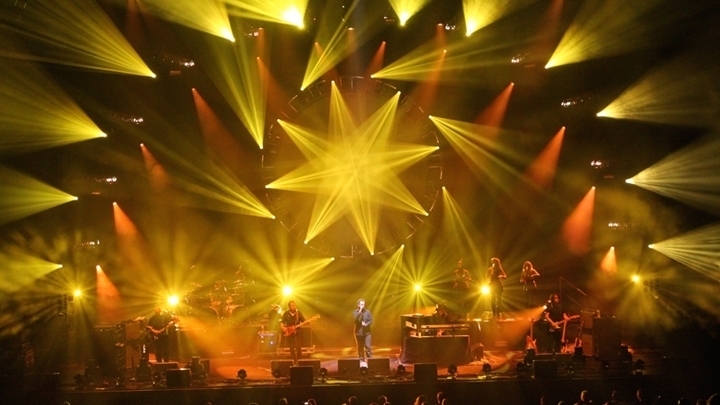From a rock show and a jazz concert, to a play staged outdoors or indoors, stage lighting is an aspect that can never be the same. The nuances of what makes for great lighting design is what makes this a special kind of craft. After all, a rock show needs to look very different from a jazz concert and they in turn will differ greatly from how a play is lit.
What Is It For?
The most important function of stage lighting is to ensure that the audience can see the musicians, actors, and objects on stage. However, it is also about drawing the attention of the audience to the people and specific parts of the stage where their focus needs to be and taking their attention away from the places which don’t need their focus. Lighting is also a pivotal piece of the puzzle when it comes to evoking emotions from the audience. It determines the mood that is set for the concert or play. From the intensity of the lights to the type of lights used and the manner in which they are controlled, many aspects of lighting work together to create a specific mood. The whole process of stage lighting is a collaborative effort since it can reinforce the work of everyone from the musician and the choreographer to the costume designer. Therefore, lighting designers never work in isolation. The needs of the event and the people involved always determine the lighting design.
The Process
Lighting designers begin by attending rehearsals because it gives them a feel for the lighting cues and helps them plan how to light the actors or musicians as they move from place to place on stage. Accordingly, the lighting designer then decides which lighting instruments are to be used and where to place each one. A cross section of the stage that is drawn to scale and shows sightlines and height and position of each instrument, a planned layout, cue sheets and list of lighting instruments to be used are just some of the planning that goes into stage lighting design.Lighting designers typically use a combination of both direct and indirect light to illuminate the musician, actors or objects on stage. Direct lighting comes from a definite location and illuminates specific areas while indirect lighting washes over the entire area to be lit and doesn’t appear to come from any one specific location. Television shoots typically require washes of light so that every bit of the stage is lit. There are various factors that determine the amount of light needed to illuminate an object: the reflective properties of the object, the colour, contrast with its surroundings, size and distance from the viewer.
Lighting designers depend on a vast array of effects that they can create. They do this by manipulating these four properties:
- Intensity of the light used: The brightness or a dim glow of light can be created by the lighting designer using a variety of dimmers and controllers. The sudden fade to black that is used to end a dramatic rock song gives the concert its dramatic end and is thanks to the creativity of the lighting designer.
- Colour: The colour of a person or an object on stage is not just determined by its actual colour but also by the colour of the light that illuminates it. Lighting designers use a variety of filters or gels to tint stage lighting in colors that cast a warm glow, create an ominous mood or more.
- Distribution: From soft and unfocused to sharply defined beams of light, lighting instruments can be used to create patterns of light and can be directed at objects from various angles, giving rise to light and shadows that the designer plays with.
- Movement: Light on the stage can dramatically and quickly or slowly and silently change. A scene that starts with a gentle light of dawn can end with sharp, bright rays of sunshine or a pumping rock ballad can have dramatic and sudden changes in light.
What Makes A Great Lighting Designer
Seeing that the work of a lighting designer is complex and detailed, it takes a lot of practice and dedication to be a great lighting designer. Common mistakes made by rookie lighting designers that can ruin an otherwise great event include using audio XLR cables for lighting. Primarily used for speakers and sound, this type of cable has low impedance and can cause data problems if substituted for DMX cables. If you are lucky, this substitution may only cause minor problems but it could also cause the entire setup to malfunction and become completely unresponsive. Another big mistake is not using safety precautions with your lights. Dressing the cables used, safety-chaining hanging lights, and weighing down light stands will not just keep your expensive lights safe but also help prevent accidents and chaos. Lastly, do not run your lighting lines with your audio lines. While your lighting might not be affected, the sound will be adversely affected with noise in the speakers and make for an event that will be remembered for its mistakes.
In the end, what makes for a great lighting designer is tuning into the art and craft of lighting by becoming intimately acquainted with the event, whether it is a play or a concert, intense amounts of preparation, alertness to cues and attention to detail.

